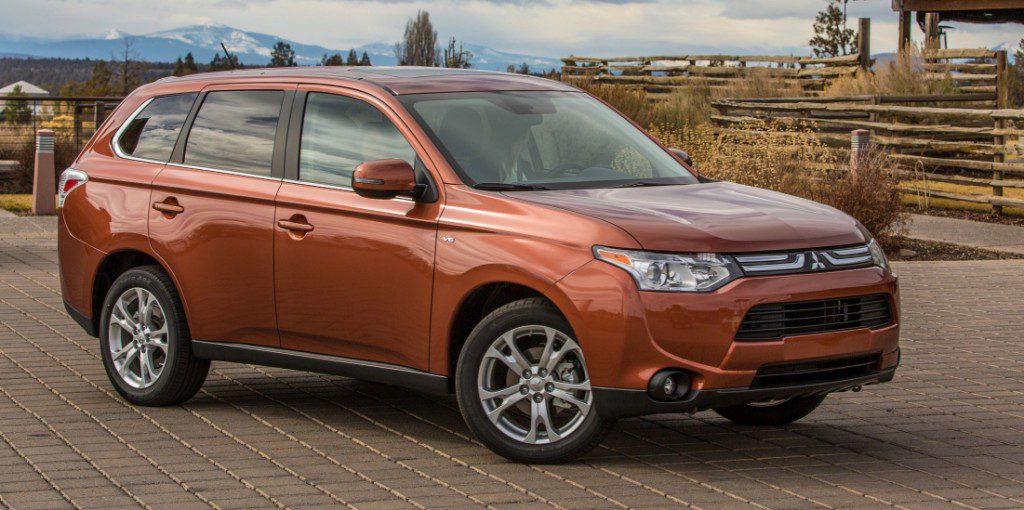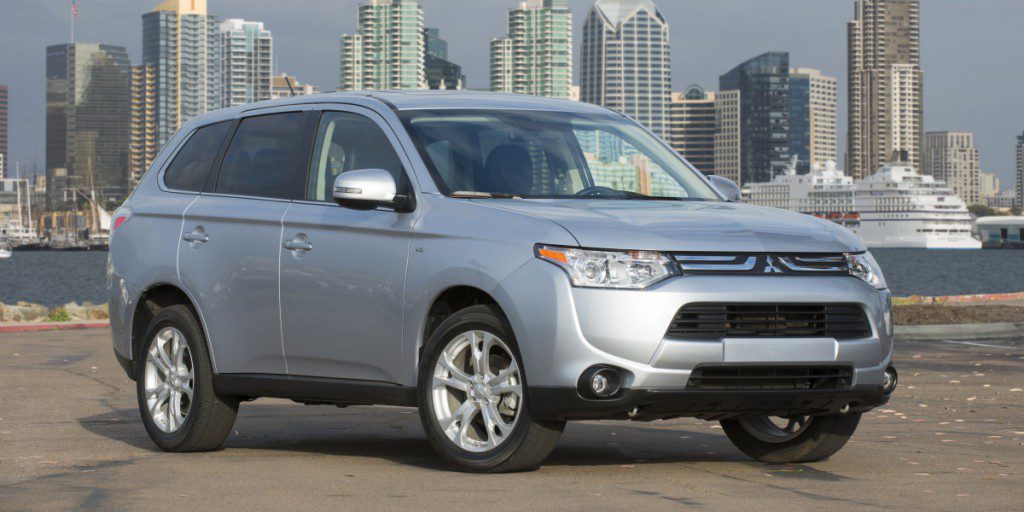| Compact SUV; Built in |
|
|
| Good condition price range: $12,600 – $25,200* |

2014 Mitsubishi Outlander

2014 Mitsubishi Outlander

2014 Mitsubishi Outlander

2014 Mitsubishi Outlander
| Pros: |
|
| Cons: |
|
While the 2007-2013 Outlander had too many demerits to rank among class leaders, the redesigned 2014 version addressed those flaws and can now be considered a serious competitor in the compact-SUV class. Outlander should appeal to three types of shoppers: those who want a relatively sporty SUV at a reasonable price; those who covet 3-row seating but don’t want to drive a larger vehicle; and those who place heavy emphasis on crash-preventative safety technology but can’t afford a premium SUV. The GT model with its standard V6 power and all-wheel drive is our favorite, but any Outlander is worth a look.
Overview
The Mitsubishi Outlander entered its third generation for the 2014 model year. Outlander was one of two Mitsubishi SUVs, each of which was a compact crossover. At more than 183 inches in length, it was one of the longest vehicles in Consumer Guide’s compact-SUV class–and more than a foot longer than the Mitsubishi Outlander Sport. Outlander offered unusual-for-its-class features like a V6 engine and 3 rows of seats.
The redesigned 2014 Outlander saw numerous changes. Though its basic platform remained the same, the front fascia was dramatically redesigned and nearly all of the sheet model and glass were new. Mitsubishi engineers aimed to improve Outlander’s aerodynamics and reduced its weight with lighter (though more rigid) materials. These changes, as well as powertrain and other tweaks, were meant to improve fuel economy.
Mitsubishi also said they undertook efforts to improve performance, quietness, and interior materials. Seats were redesigned for better comfort and ergonomics, and enhancements were made to the control interface and audio and navigation systems. For the first time in an Outlander, a driver-side knee airbag and 3-row (7-passenger) seating was standard on all trim levels. A power liftgate and a suite of high-tech safety features were newly available, too.
The redesigned Outlander was offered in three trim levels: the base ES, volume SE, and sporty GT.
The ES had standard 7-passenger seating, and both the 2nd and 3rd rows were split and were able to fold flat. The ES came with automatic climate control and the usual assortment of convenience items.
The SE added dual-zone automatic climate control, heated front seats, leather-wrapped steering wheel and shift knob, rearview camera, 6.1-inch infotainment touchscreen, voice recognition, HD Radio, fog lights, 18-inch wheels, and more.
In addition to V6 power, the GT added Mitsubishi’s Super All-Wheel Control (all-wheel drive) system, steering-wheel-mounted paddle shifters, specific exterior styling, woodgrain trim, satellite radio, and more.
Mitsubishi offered two major option packages that were available on the SE and GT. The Premium Package included a power sunroof, leather upholstery, power driver seat, power liftgate, and a Rockford-Fosgate premium sound system. On the SE, the Premium Package also included satellite radio and woodgrain trim.
The Touring Package included a navigation system with 3D mapping and real-time traffic information, power sunroof, leather seats, the Rockford-Fosgate sound system, power driver seat, and power liftgate. It also included adaptive cruise control, lane-departure warning, and forward-collision mitigation.
The Outlander ES and SE were fitted with a 166-horsepower 2.4-liter 4-cylinder engine paired to a continuously variable automatic transmission (CVT). The GT was powered by a 224-horsepower 3.0-liter V6 engine with a 6-speed automatic transmission.
The ES was front-wheel drive only, while the SE was offered with front-wheel drive or all-wheel drive. The GT was AWD only.
EPA fuel-economy estimates for front-drive Outlander ES and SE were 25 mpg city and 31 mpg highway. The AWD SE was rated at 24/29 and the GT estimates were 20/28. Mitsubishi recommended regular-grade gas for the 2.4-liter 4-cylinder engine, and premium for the 3.0-liter V6.
The 2014 Outlander included a standard complement of expected and federally mandated safety features. In addition, Outlander came standard with a driver knee airbag. As mentioned previously, the Touring Package included three high-tech safety features, each designed to protect distracted or drowsy drivers.
Yearly Updates
| 2014 Outlander |
